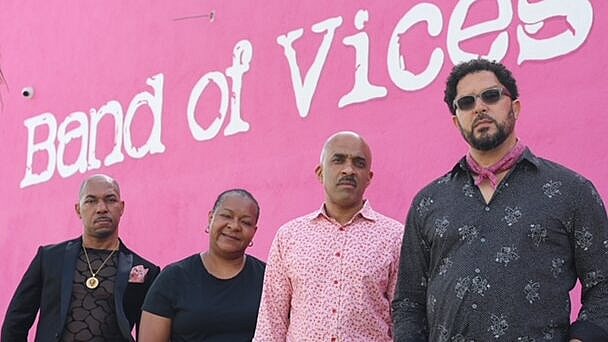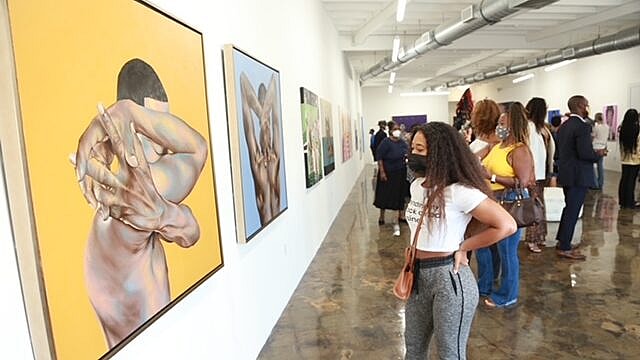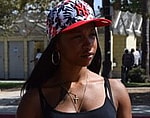Band of Vices is a Black-owned art gallery which has quickly become an anchor in the West Adams district, serving as a bridge to honor art and culture both past and present in Los Angeles.

Photo: Band of Vices
“We consciously put both of our exhibition spaces in West Adams, which has historically been a community of color, both Black and Brown,” says Darryl E. Wash, Chief Executive Officer at Band of Vices. “It’s important to us that we exist within these communities.”
Band of Vices did not become a reality based solely upon the work of one person but rather a collective group. In the true fashion of team work making the dream work, its members were able to merge their individual skill sets and knowledge bases towards one collective interest: Art.
They all come from diverse professional backgrounds, ranging from acting to philanthropy. Wash manages the business and sets its strategy, while bringing his successful entrepreneurial background to the table. Terrell Tilford, founder of Band of Vices, has been working to exalt actors such as himself for over 30 years. Senior Curator Melvin Marshall has an extensive educational background in art relating to the African diaspora and was completing an advanced degree at Cambridge University before taking the position.. And as a Black woman with an extensive background in media research with companies including Fox and Nickelodeon, Melva Benoit helps relay Band of Vices’ brand purpose.
“The name Band of Vices is really used to draw the public in to understand that we are defining and redefining how we are seen. The word ‘vice’ has a certain type of connotation that when you hear it, you automatically assume that it is negative,” Wash detailed.
“But, there is also a way that people have been described throughout history that could also be perceived as negative.”
Wash points to some of the labels that have been placed upon African-Americans and other people of color to justify oppression and marginalization.
“What it meant to be Black many years ago was actually negative. There were times when the LGBTQIA+ community were labeled in ways to connote negativity. What we say is, come one, come all,” Wash continued.

The bold pink paint that covers the Band of Vices building was picked to serve as a love song to the community. As people living in a society that does not usually celebrate our wholeness as individuals, Tilford wanted to highlight the softer side of those who do not represent the dominant, white society.
“This building is called our sacred house. It’s called that because it is our safe space. It is a spiritual place. It is a place where everyone is welcomed and everyone should feel comfortable,” said Wash.
Band of Vices also owns and operates its original location, directly across the street from the Sacred House. It serves as a collaboration space for third-party creatives, who can use it for merch drops and other events.
With regard to those pitches, Wash says Band of Vices’ model is no money upfront but 50/50 profit split if money is made, with the only other stipulation that pitches considered must be consistent with Band of Vices’ voice and brand.
“One of the things that is very interesting is that for whatever reason, we have shown more solo or two-woman shows by Black women than any gallery in the country in the last 3-4 years,” Wash recalled. “Partially because their voices are so strong.”
One of his recent favorites was the GAZE exhibit, which opened at Band of Vices’ Sacred House gallery in December 2020. Two solo exhibitions featured artists Monica Ikegwu and Tommy Mitchell, while another introduced Nigerian figurative painter Amoo Emmanuel. L.A.-based artist Alicia Teele also showcased a series of self-portraits in charcoal & graphite.
“There are too many creatives who are overlooked, forgotten, cast aside and marginalized who don’t get the opportunity,” Wash added. “We want to give people the opportunity to show the world what they have to offer.”

Tina Sampay, also known as Slauson Girl, is a writer and journalist from South Central, Los Angeles. She is currently building and growing her own news platform and hopes to make Slauson Girl a trusted source for independent news and media. Her drive and intent is representation for marginalized communities–including the one she comes from. Slauson Girl represents the “Ghetto Girl” in inner city America who are left out of mainstream discussion. She hopes to broaden the perspective around girls in the inner city through her branding and writings.
Have you subscribed to theGrio podcasts “Dear Culture” or “Acting Up?”
TheGrio is now on your TV via Apple TV, Amazon Fire, Roku, and Android TV. Also, please download theGrio mobile apps today!

